 This month the Indonesian government dedicated the 100,000th new home in Aceh Province, three years after the towering waves of a tsunami crashed ashore in one of the deadliest natural disasters in history. Roads, bridges, schools, hospitals, seaports and airstrips have also been built in Aceh, and most of the displaced population have found new homes.Similar progress has been made in Sri Lanka, Thailand and other nations around the rim of the Indian Ocean, where the radiating waves that followed an earthquake off the Indonesian coast took 260,000 lives on the morning of Dec. 26, 2004.The disaster is over now, part of the past. But for those who survived it, there is no clear break between what was past and what is now. The tsunami is part of their present and part of their future.For some, the memories are paralyzing, aid workers say, and a number of programs are in place in affected areas to help people try to recover their lives.In one such program, the American Red Cross distributed disposable cameras to about 80 children in Aceh and in Sri Lanka and told them to focus on what is happy in their lives."Some children, after the tsunami, they lost their creativity and lost interest in normal life," said Manan Kotak, a psycho-social program specialist for the American Red Cross in Aceh."They are always remembering the day of the tsunami and everything they lost," he said. "So we are trying to bring them out. If they keep it in their minds, it will never come out."Some, he said, are still too afraid of the waves to visit the seashore.He said the most difficult moment when the cameras were handed out, and the most exciting, was when the children, pointing them this way and that, wanted to shoot all their pictures at once.The young photographers, ages 6 to 14, were told to slow down and search out things they like at home, at school and in their neighborhoods. Program monitors then culled 20 pictures from a deluge of 3,500, many of them shot upside-down or out of kilter or showing an errant finger in front of the lens.The result is a glimpse of life just as it was before the tsunami - as if there never had been a tsunami - people at work and at play, climbing trees, tending goats, pulling in fishing nets, sitting at school desks, holding children, gazing out across a broad, placid sea.But in all of them, the horror of that day hovers just below the sun-filled surface.Ulfa, age 12, photographed two children standing at the end of a dock, waves frothing around them, and titled her picture, "Beautiful View."A. Akila Nilukshan, 10, photographed a fish market on a shoreline devastated by the waves. "I wanted to show women making money selling fish," he said."The women were smiling and doing their job so happily."G.M. Kavinda Krishan Fernando, 10, photographed a laborer near a local market, struggling to survive. "He was a very old man carrying a heavy sack, and I felt sad for him," he said. "But the heavy sack will help him earn money for his livelihood."Raveen Pramudith, 12, photographed his younger brother sitting on a rock by the seaside. "I wanted to take his picture with the beauty of the beach," he said. "I also remembered the tsunami while taking the photo."Unlike some other children, he is able to talk about those memories now. "There were so many dead bodies lying on the road," he said. "My family and I were scared to return home. Our village was not as beautiful as it was before, and it was full of darkness."
This month the Indonesian government dedicated the 100,000th new home in Aceh Province, three years after the towering waves of a tsunami crashed ashore in one of the deadliest natural disasters in history. Roads, bridges, schools, hospitals, seaports and airstrips have also been built in Aceh, and most of the displaced population have found new homes.Similar progress has been made in Sri Lanka, Thailand and other nations around the rim of the Indian Ocean, where the radiating waves that followed an earthquake off the Indonesian coast took 260,000 lives on the morning of Dec. 26, 2004.The disaster is over now, part of the past. But for those who survived it, there is no clear break between what was past and what is now. The tsunami is part of their present and part of their future.For some, the memories are paralyzing, aid workers say, and a number of programs are in place in affected areas to help people try to recover their lives.In one such program, the American Red Cross distributed disposable cameras to about 80 children in Aceh and in Sri Lanka and told them to focus on what is happy in their lives."Some children, after the tsunami, they lost their creativity and lost interest in normal life," said Manan Kotak, a psycho-social program specialist for the American Red Cross in Aceh."They are always remembering the day of the tsunami and everything they lost," he said. "So we are trying to bring them out. If they keep it in their minds, it will never come out."Some, he said, are still too afraid of the waves to visit the seashore.He said the most difficult moment when the cameras were handed out, and the most exciting, was when the children, pointing them this way and that, wanted to shoot all their pictures at once.The young photographers, ages 6 to 14, were told to slow down and search out things they like at home, at school and in their neighborhoods. Program monitors then culled 20 pictures from a deluge of 3,500, many of them shot upside-down or out of kilter or showing an errant finger in front of the lens.The result is a glimpse of life just as it was before the tsunami - as if there never had been a tsunami - people at work and at play, climbing trees, tending goats, pulling in fishing nets, sitting at school desks, holding children, gazing out across a broad, placid sea.But in all of them, the horror of that day hovers just below the sun-filled surface.Ulfa, age 12, photographed two children standing at the end of a dock, waves frothing around them, and titled her picture, "Beautiful View."A. Akila Nilukshan, 10, photographed a fish market on a shoreline devastated by the waves. "I wanted to show women making money selling fish," he said."The women were smiling and doing their job so happily."G.M. Kavinda Krishan Fernando, 10, photographed a laborer near a local market, struggling to survive. "He was a very old man carrying a heavy sack, and I felt sad for him," he said. "But the heavy sack will help him earn money for his livelihood."Raveen Pramudith, 12, photographed his younger brother sitting on a rock by the seaside. "I wanted to take his picture with the beauty of the beach," he said. "I also remembered the tsunami while taking the photo."Unlike some other children, he is able to talk about those memories now. "There were so many dead bodies lying on the road," he said. "My family and I were scared to return home. Our village was not as beautiful as it was before, and it was full of darkness." To read more go to:
As in the days of Noah....

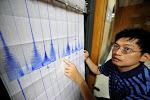

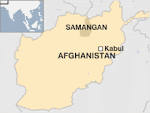







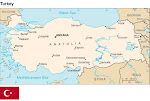
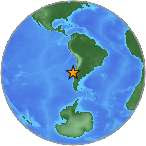




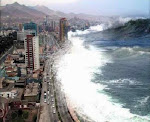

.jpg)


.bmp)
No comments:
Post a Comment